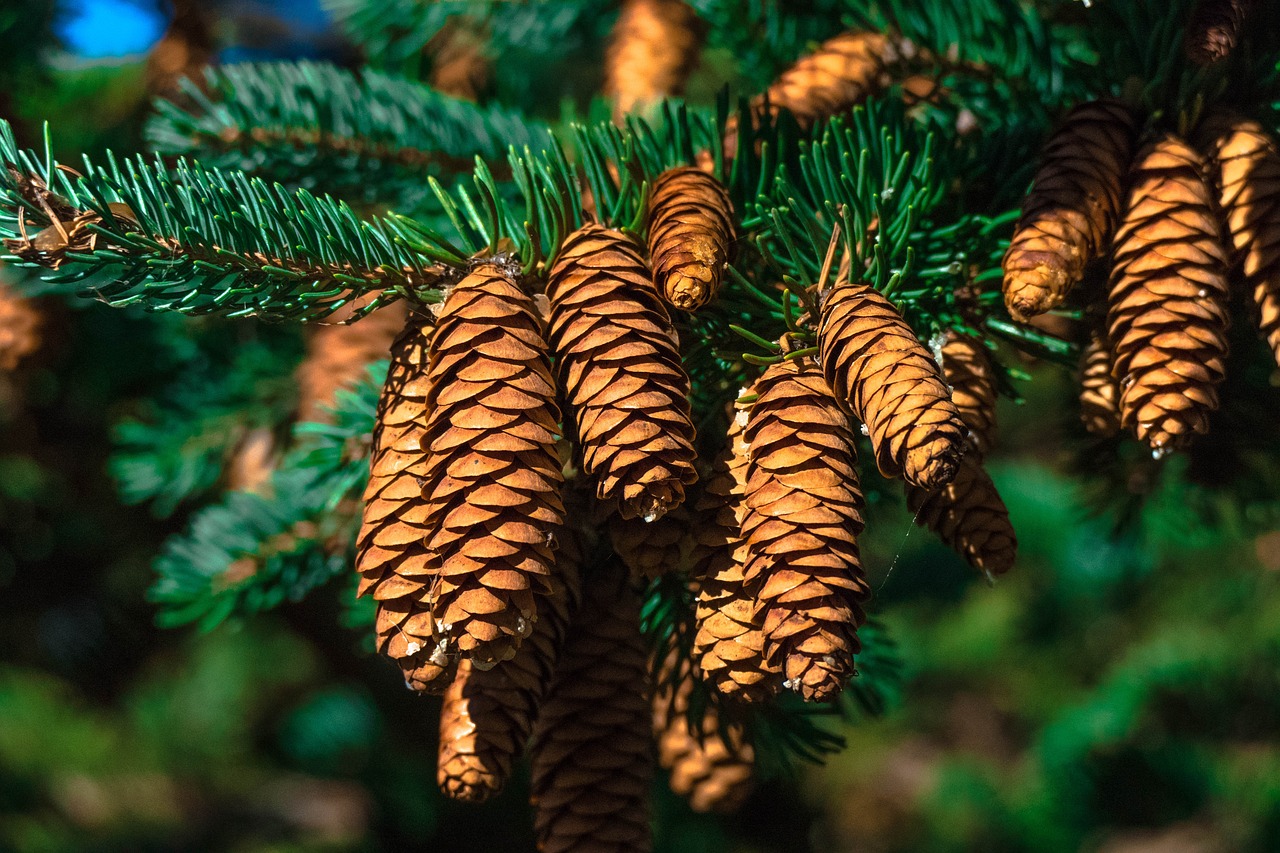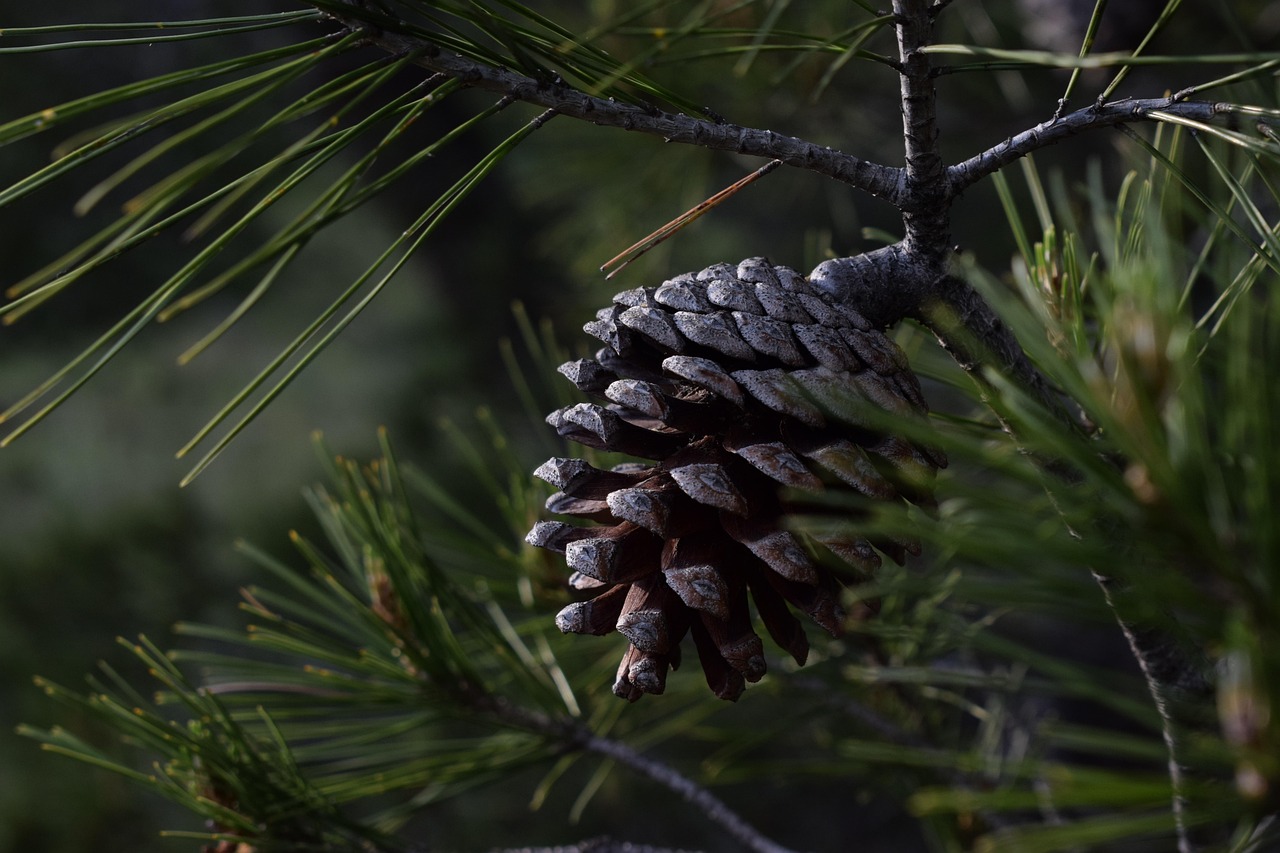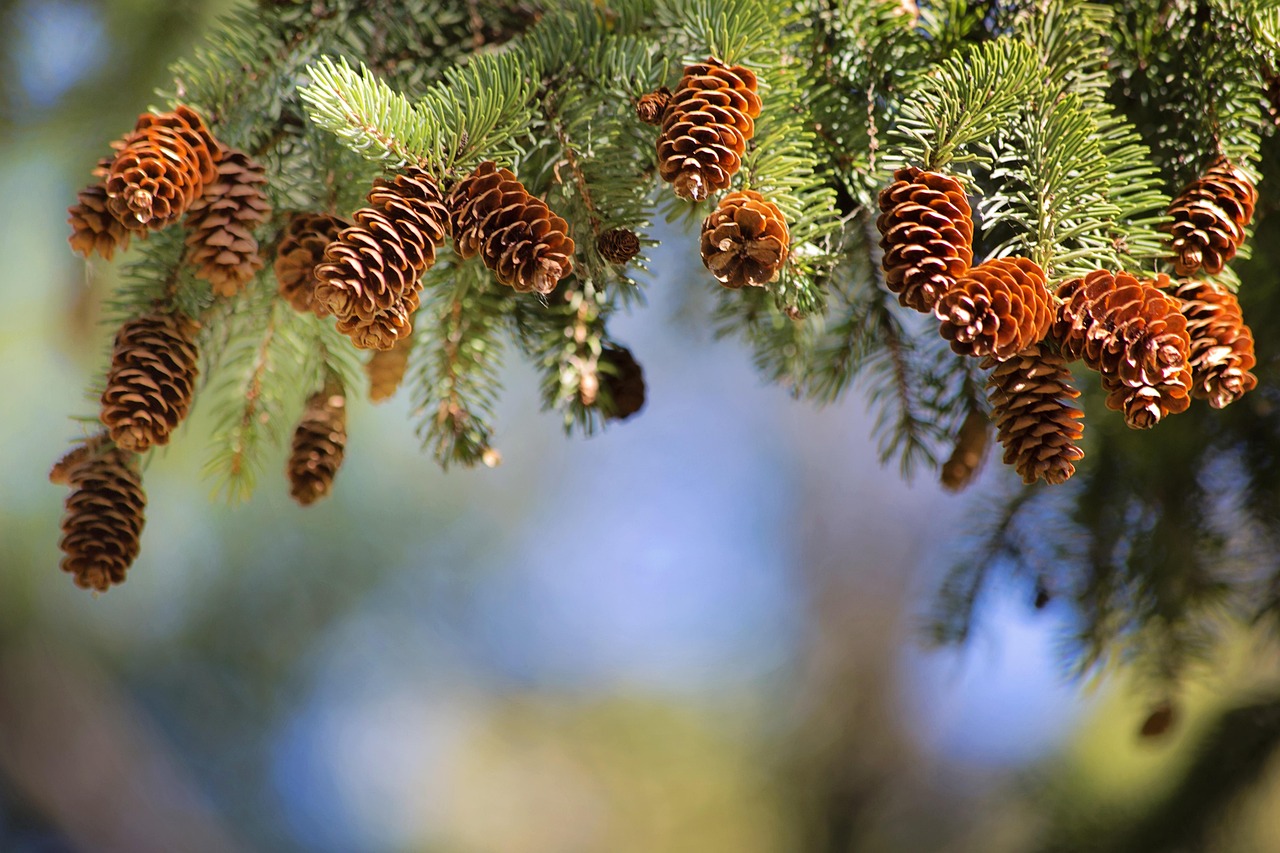Loblolly pine is generally considered to have comparable strength to longleaf pine wood, though there are differences in their density and durability. Loblolly is often favored for construction due to its availability and suitable strength properties, while longleaf pine is valued for its longevity and resistance to decay.
Pine trees are among the most versatile and widely used species in the world. They provide essential materials for various industries, including construction, furniture, and paper production. Two prominent types of pine found in the southeastern United States are loblolly pine and longleaf pine. Each has unique characteristics that influence their strength and suitability for different applications.
Loblolly pine (Pinus taeda) is a fast-growing tree that thrives in moist, acidic soils. It typically reaches heights of 80 to 100 feet and has a trunk diameter of 1 to 3 feet. This species is commonly used in timber production due to its rapid growth rate and abundant supply. Its wood is soft to medium-hard, making it easily workable for a variety of applications.
In contrast, longleaf pine (Pinus palustris) is a slower-growing species known for its tall stature and long life span. Longleaf pines can grow up to 100 feet tall, with some specimens even exceeding this height. The wood produced by longleaf pines is dense and has a high resistance to decay, making it suitable for outdoor applications like decking, fencing, and utility poles.
Physical Properties Comparison

When comparing loblolly pine to longleaf pine, several physical properties should be considered. The following table highlights key characteristics of each type of wood:
| Property | Loblolly Pine | Longleaf Pine |
|---|---|---|
| Density (lbs/ft3) | 30-40 | 35-50 |
| Moisture Content (%) | 12-15 | 12-14 |
| Compression Strength (psi) | 6,000-7,500 | 8,000-9,000 |
| Tensile Strength (psi) | 7,000-8,500 | 9,000-10,000 |
| Durability Rating | Moderate | High |
The density of loblolly pine typically ranges from 30 to 40 lbs/ft3, while longleaf pine is denser, falling between 35 to 50 lbs/ft3. This difference in density affects the strength and durability of the wood. Additionally, loblolly pine has a lower compression and tensile strength compared to longleaf pine. These qualities make longleaf pine a preferred choice for applications requiring superior strength and longevity.
Moreover, the durability rating is another critical aspect to consider. Loblolly pine has a moderate durability rating, which means it may require additional treatment for outdoor use. Longleaf pine, on the other hand, is known for its high durability and natural resistance to pests and decay.
Understanding these differences is essential when selecting the right type of wood for specific projects. The choice between loblolly and longleaf pine will depend on factors such as intended use, environmental conditions, and budget considerations.
This comparison provides a foundation for understanding the strengths and weaknesses of each wood type. As we delve deeper into their applications and performance characteristics in the subsequent sections, it will become clearer how these two species stand against each other in various contexts.
Applications of Loblolly Pine
Loblolly pine is widely used in various applications due to its availability, workability, and cost-effectiveness. This tree species is particularly significant in the timber industry. Here are some common uses of loblolly pine:
- Construction: Loblolly pine is extensively used for framing, flooring, and roofing. Its strength-to-weight ratio makes it suitable for structural components.
- Plywood: The wood is commonly utilized in plywood production. Its straight grain and uniform texture contribute to high-quality plywood products.
- Furniture: With its attractive appearance, loblolly pine is often used in furniture manufacturing, including tables, chairs, and cabinets.
- Paper Products: This type of pine is a primary source of pulp for paper production due to its fibrous nature.
- Landscaping: Loblolly pine is also used for mulch and erosion control in landscaping projects.
Characteristics of Longleaf Pine
Longleaf pine is renowned for its unique characteristics that make it a valuable resource. It is often sought after for specific applications where durability and strength are paramount. Below are some key features of longleaf pine:
- Longevity: Longleaf pine trees can live for several centuries, making them a sustainable option for timber harvesting.
- Natural Resistance: This species exhibits natural resistance to pests and diseases, reducing the need for chemical treatments.
- Aesthetic Appeal: Longleaf pine has a beautiful grain pattern and color, which makes it desirable for fine woodworking and decorative applications.
- Fire Resistance: The tree’s thick bark provides protection against fire, allowing it to thrive in fire-prone areas.
Strength Comparisons in Practical Use
The application of loblolly and longleaf pine in real-world scenarios can highlight their respective strengths. Understanding how each type of wood performs under stress can guide builders and manufacturers in making informed choices.
Structural Applications
Loblolly pine is often favored in residential construction due to its rapid growth and lower cost. However, longleaf pine is typically preferred for heavy-duty applications such as:
- Bridges: The durability of longleaf pine makes it ideal for bridge construction, where strength and resistance to decay are crucial.
- Utility Poles: Longleaf pine’s high strength-to-weight ratio allows it to withstand environmental stresses while remaining lightweight.
- Marine Applications: Due to its resistance to moisture and decay, longleaf pine is often used in marine environments, such as docks and pilings.
Furniture and Cabinetry
When it comes to furniture and cabinetry, both loblolly and longleaf pine have their advantages:
- Loblolly Pine: Its affordability and availability make it a popular choice for mass-produced furniture.
- Longleaf Pine: The aesthetic qualities and durability of longleaf pine make it a preferred option for high-end furniture and custom cabinetry.
Market Demand and Availability
The market demand for loblolly pine has increased significantly due to the emphasis on sustainable forestry practices. As a fast-growing species, loblolly pine can be harvested more frequently than longleaf pine. This results in lower prices and higher availability in the market.
On the other hand, longleaf pine is less common due to its slower growth rate and historical overharvesting. However, there has been a resurgence in interest due to its ecological benefits and superior properties. Consumers are increasingly valuing sustainable options that offer long-term benefits.
This shift creates a dynamic market where both types of wood can coexist, catering to different needs and preferences within the construction and woodworking industries.

Environmental Impact and Sustainability

Both loblolly pine and longleaf pine play significant roles in their ecosystems. Understanding their environmental impact is crucial, especially as sustainability becomes a key focus in forestry and timber production.
Loblolly Pine and Its Impact
Loblolly pine is often grown in plantations, which can lead to a range of environmental considerations:
- Carbon Sequestration: Loblolly pine trees grow rapidly, making them effective at sequestering carbon dioxide from the atmosphere. This contributes positively to mitigating climate change.
- Biodiversity: While loblolly pine plantations can support some wildlife, they lack the biodiversity of natural forests. The monoculture approach may not provide the necessary habitat for various species.
- Soil Erosion: In some cases, extensive loblolly pine plantations can lead to soil erosion, particularly when not managed appropriately.
Longleaf Pine and Its Ecological Benefits
Longleaf pine forests are among the most biodiverse ecosystems in North America. Their management practices are often more sustainable and beneficial for the environment compared to loblolly pine plantations:
- Habitat Restoration: Longleaf pine ecosystems support numerous plant and animal species, many of which are endangered. These forests provide critical habitat for species such as the red-cockaded woodpecker.
- Fire Ecology: Longleaf pines are adapted to fire, which plays a vital role in maintaining the health of these ecosystems. Controlled burns help reduce underbrush and promote new growth.
- Soil Health: The deep root systems of longleaf pines help improve soil health and prevent erosion, enhancing nutrient cycling within the ecosystem.
Treatment and Preservation Techniques
Both types of pine wood require treatment and preservation to enhance their longevity and performance in various applications. Here are the common methods used for each type:
Treatment for Loblolly Pine
Loblolly pine is treated to improve its resistance to decay and pests, especially for outdoor uses:
- Pressure Treatment: This process involves forcing preservatives into the wood under high pressure, making it resistant to insects and moisture.
- Surface Treatments: Applying sealants or stains can help protect loblolly pine from external elements, extending its lifespan.
- Heat Treatment: This method involves heating wood to remove moisture and kill pests, making it suitable for international shipping.
Treatment for Longleaf Pine
Longleaf pine generally requires fewer treatments due to its natural resistance but can still benefit from certain techniques:
- Chemical Preservatives: While longleaf pine has natural resistance, applying wood preservatives can further enhance its durability for outdoor applications.
- Natural Oils: Using natural oils can help protect the wood while preserving its aesthetic qualities without harmful chemicals.
- Regular Maintenance: Periodic inspections and maintenance help ensure that longleaf pine structures remain in good condition over time.
Cost Considerations
The cost of loblolly pine and longleaf pine can vary significantly based on several factors, including availability, demand, and treatment methods. Here’s an overview of what influences the pricing of these two types of wood:
Loblolly Pine Costs
Loblolly pine is typically more affordable due to its widespread availability and faster growth rate. Factors influencing its cost include:
- Market Demand: Increased demand for loblolly pine in construction keeps prices relatively stable.
- Treatment Expenses: The cost of pressure treatment or surface treatment can add to the overall price, especially for outdoor applications.
Longleaf Pine Costs
Longleaf pine tends to be more expensive due to its slower growth rate and limited availability. Key factors affecting its pricing include:
- Sustainability Premium: Consumers are often willing to pay more for sustainably sourced wood, which can drive up prices for longleaf pine.
- Specialty Applications: The unique properties of longleaf pine make it ideal for high-end products, thus increasing its market value.
This pricing dynamic reflects not only the physical characteristics of the wood but also consumer preferences and environmental considerations that influence purchasing decisions in the lumber market.
Performance in Various Conditions
When evaluating loblolly pine and longleaf pine, it’s essential to consider how each performs under different environmental conditions. Their adaptability can significantly impact their usability in specific projects.
Moisture and Humidity
One of the most critical factors affecting wood performance is moisture. Both loblolly and longleaf pine exhibit varying levels of resistance to moisture-related issues:
- Loblolly Pine: While loblolly pine can tolerate some moisture, it is more susceptible to warping and decay in excessively humid environments. This necessitates proper treatment and maintenance for outdoor applications.
- Longleaf Pine: Longleaf pine’s natural resistance to moisture makes it a better choice for areas with high humidity. Its durability allows it to withstand the elements without deteriorating quickly.
Temperature Variations
The response of these pines to temperature changes can also influence their application:
- Loblolly Pine: This wood can expand and contract with temperature fluctuations, leading to potential issues in stability if not properly acclimated before installation.
- Longleaf Pine: The dense structure of longleaf pine offers better stability under varying temperatures, which can be advantageous in climates with extreme seasonal changes.
Market Trends and Future Outlook

>The market for both loblolly and longleaf pine is evolving as consumers become more environmentally conscious. Several trends are shaping the future of these woods:
- Sustainable Forestry Practices: There is an increasing demand for sustainably sourced timber. Loblolly pine plantations are adapting by implementing practices that promote biodiversity and reduce environmental impact.
- Restoration Initiatives: Efforts to restore longleaf pine ecosystems are gaining traction. These initiatives aim to revive natural habitats while providing a sustainable source of high-quality timber.
- Technological Advancements: Innovations in wood treatment and preservation techniques are enhancing the durability and performance of both types of pine, making them more appealing in various applications.
Final Thoughts
In summary, both loblolly and longleaf pine offer distinctive advantages and characteristics that cater to different needs within the woodworking and construction industries. Loblolly pine stands out for its rapid growth, cost-effectiveness, and versatility in construction applications. Its widespread availability makes it a practical choice for large-scale projects.
On the other hand, longleaf pine is celebrated for its durability, aesthetic qualities, and ecological benefits. While it may come at a higher price point, its longevity and resistance to decay make it a worthy investment for high-end or specialty applications.
The decision between loblolly and longleaf pine ultimately depends on the specific requirements of a project, including budget constraints, environmental conditions, and desired performance characteristics. As sustainability continues to shape consumer preferences, both types of pine are likely to play crucial roles in the future of timber production. Understanding their strengths will help consumers make informed choices that align with their ecological and functional goals.
